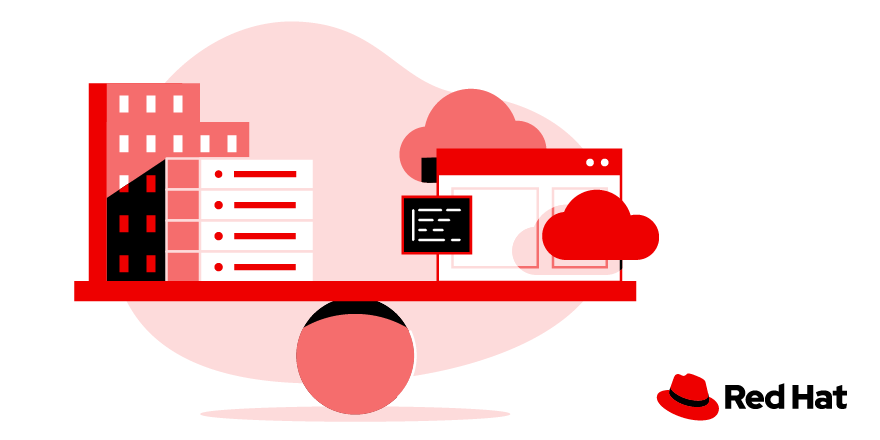Are Red Hat Enterprise Linux and CentOS the same thing?
October 06, 2022
Table of contents
Quick Access

If we talk about cloud solutions, we must talk about Red Hat, since it is a company that offers companies of all kinds a wide range of Linux packages, as well as tools that facilitate cloud administration and container management.
Some of RedHat's well-known creations include Red Hat Storage (RHS), Red Hat Enterprise Linux (RHEL), Red Hat Virtualization (RHV), Red Hat OpenShift, Red Hat OpenStack Platform, Red Hat Ansible, and Red Hat Atomic Host, they explain. on the EDUCBA website about the products they currently have available.
Red Hat is one of the most popular cloud computing companies at the moment, but other similar solutions like CentOS have emerged ready to compete, although they seem to be quite similar.
What is CentOS?
On their official website they offer an explanation for what this technology is, they point out “CentOS is an open source project that launches 2 different distributions of Linux®, CentOS Stream and CentOS Linux. CentOS Stream is the upstream development platform for upcoming Red Hat® Enterprise Linux product releases.”
They explain where the name of this technology comes from, explaining “CentOS stands for Community Enterprise Operating System. It is an acronym used in the names of the open source community, multiple working groups, and 2 Linux distributions.

CentOS and Red Hat: differences between both technologies
You can start by making it clear that CentOS is a project, while Red Hat Enterprise Linux is an enterprise product, although both are open source, making them accessible to a wide audience.
Although both are Linux distributions, there are several differences between them: technical, support and development. For example variations in binary execution paths.
- The support structures are different. CentOS Stream and CentOS Linux support is provided by the goodwill of other users and contributors. Red Hat Enterprise Linux is supported by full-time engineers and staff.
- The way everyone invites, tests, and commits source code modifications is different. Red Hat Enterprise Linux contributions are channeled through CentOS Stream. Anyone can suggest CentOS Stream contributions, but only Red Hat engineers accept and commit contributions. CentOS Linux does not have a contribution model.
Despite the fact that both technologies belong to Linux, they are very different from each other and are usually used for different projects, depending on their needs and the requirements of the client or user.
CentOS is part of the Red Hat development cycle
Now, for people who use Red Hat, it is essential to know how CentOS is used since it is part of the process of developing this open-source technology. On their official page they explain the steps and technologies present in this process:
- Fedora: The upstream project on which future major releases of Red Hat Enterprise Linux are based.
- CentOS Stream: A preview of upcoming minor releases of Red Hat Enterprise Linux.
- Red Hat Enterprise Linux: The official, hardened, and fully supported enterprise operating system product.
- CentOS Linux: A community-produced and supported Linux distribution derived from source code published by Red Hat, scheduled to be discontinued in 2021-2024.
As can be seen, the development line with Red Hat includes CentOS, although both technologies fulfill different functions in the technological processes.

How to use Red Hat for free
Red Hat makes available to developers a program called "Red Hat Developer Subscription", which is free and includes access to Red Hat Enterprise Linux among other products and tools of this software. It is an individual program designed for developers and is available to anyone who needs it.
Joining the program is free, and the interested person will be able to access and learn how to use many other Red Hat technologies. The Red Hat Developer Subscription for Individuals includes the following components of Red Hat Enterprise Linux:
- Red Hat Enterprise Linux Server (includes GUI)
- Red Hat software collections and application flows
- Red Hat developer toolset and compilers
- Numerous Red Hat Enterprise Linux infrastructure plugins
In addition to all of these technologies that are freely available to the developer in this program, Red Hat Enterprise Linux binaries will be available to the individual, the same used for production and paid subscription. In addition to the currently supported versions of Red Hat Enterprise Linux 7 and 8, the Red Hat Developer Subscription for Individuals offers access to previous versions that cover a ten-year shelf life.
At Rootstack, we count on Red Hat as one of our technological partners, which has contributed to the attention of our clients, offering all their timely computing and development solutions in the cloud. If you want to know what they can offer your company, do not hesitate to contact us.
We recommend you on video
Related Blogs
-10.38.35-a.m.png)
The basics of cloud computing

How to integrate UiPath RPA with a database
-9.19.54-a.m.png)
How IT outsourcing services can unlock your project in the retail industry

Magento Development Services for the Healthcare Industry
-5.03.33-p.m.png)
How to explain your project requirements to external mobile app developers
-2.51.54-p.m.png)